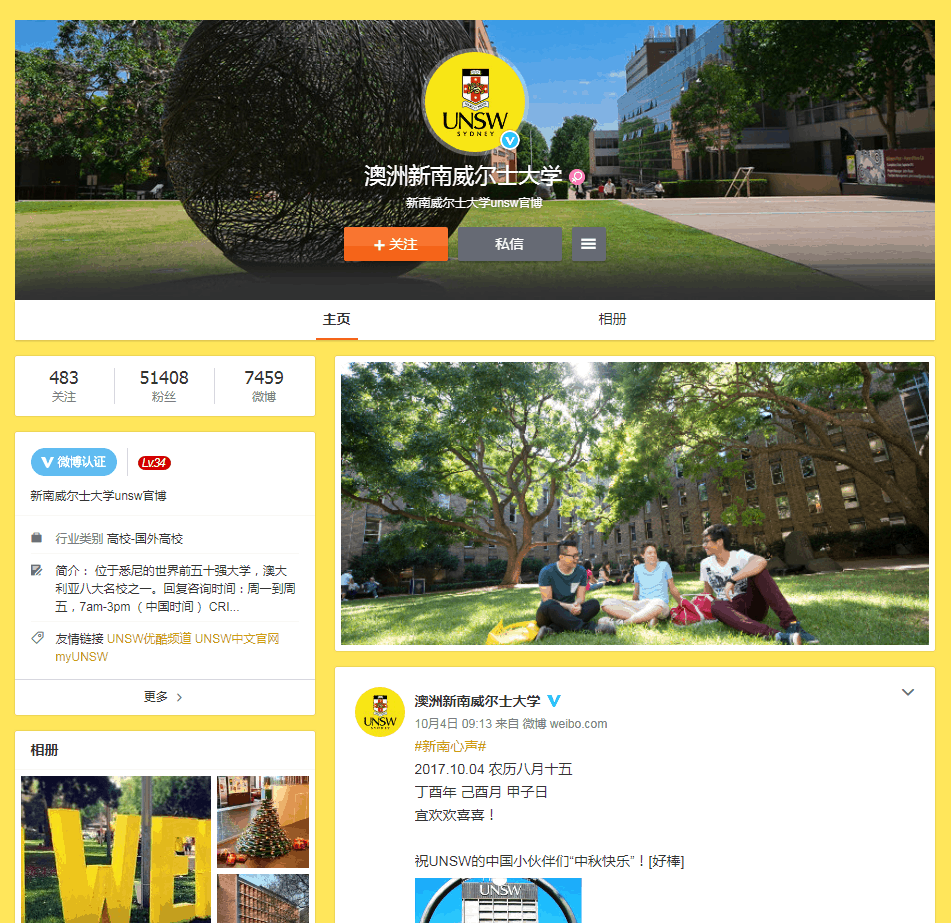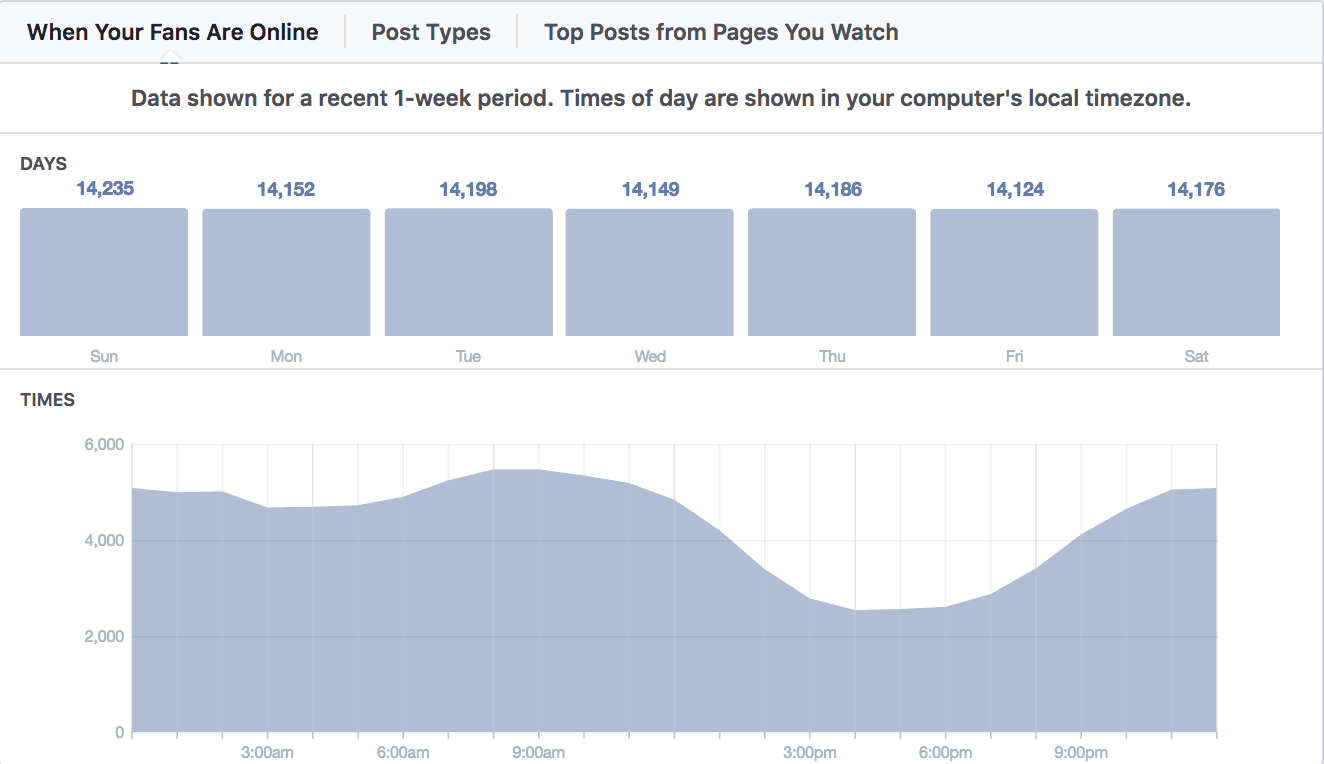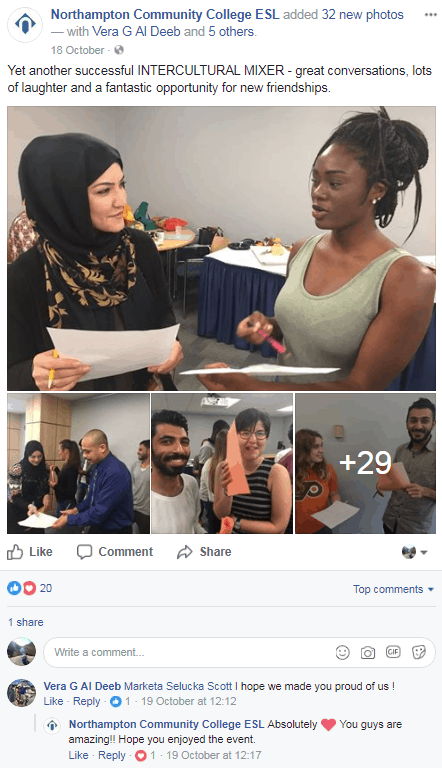
A great strength of social media is that it is a channel designed not only to allow an individual or organization to broadcast a message, but to facilitate dialogue between them and their fellow users. Acquiring an engaged audience that likes posts, shares content, and is otherwise invested in the material you post is therefore an important part of finding success on social media.
To accomplish this with an international student audience, though, can be a tricky prospect. With many schools recruiting students from all over the world, attracting a high level of engagement can require extra effort to bridge gaps with multiple nationalities and cultures.
Want to make this process a little simpler? Use these tips to start building the international social community your institution deserves.
Share Interesting Content Regularly, Across Multiple Social Networks
For users, a great social media page or profile is a destination, a place for conversation and discovery. To succeed in increasing social engagement is to establish your pages and profiles as these kinds of spaces, turning them into places to go for informative or entertaining content that answers questions users might have about your school or helps get them excited about the prospect of attending.
In practical terms, this means your school should aim to publish content to its social media pages regularly, as this provides the steady stream of attention-grabbing material necessary to get users engaged. For institutions that are not already in the habit of doing this, though, the prospect of keeping multiple social media accounts updated on a daily or even weekly basis may seem daunting. After all, each post must be fresh, and ideally designed to encourage conversation or interaction. This kind of material takes time to develop. Fortunately, there are many different kinds of content that can fit the bill here, so “creator’s block” need not be an insurmountable obstacle. Here are a few examples of styles of content that you might want to try posting to your pages:
- New blog posts or news pieces from your website
- Curated content from other websites
- Contests and giveaways for followers
- Conversation-starters (asking questions, asking for tips and suggestions for a proposed situation, posts about relevant current events)
Example: This post published by Capital School of English on Twitter uses current events as the basis for a quick, snackable post that users interested in the school can enjoy.

Just as important as coming up with good content to post is determining where that content should be posted. Powerhouse social networks like Facebook and Instagram are safe bets, thanks to their large user bases and worldwide appeal, but some schools might also want to look into regional social media opportunities when planning their international student recruitment efforts. Schools interested in increasing their influence in South Korea, for instance, would do well to create a presence on that country’s top social networking site, Naver, while schools hoping to make inroads into China should look instead to create accounts with WeChat and Weibo, that country’s top social media platforms.
Example: Internationally focused institutions like the University of New South Wales have well-established social media presences on top Chinese sites like Sina Weibo.

Whatever nationalities you hope to attract to your school, be sure to look into that country’s top social networking sites as a first step in your social media campaign. This will ensure you have the best odds of acquiring real engagement from your target audience when you begin posting.
Attracting international students might pose an additional wrinkle beyond just coming up with great content to post to your various social media pages. Even if prospective students like your institution and want to engage with your social content, they might not enjoy what you publish, or be able to engage with it, as fully as they would like to, if they are not native speakers of the language you are posting in. Little things, like using complicated language, including regional expressions or idioms in the text, or writing long sentences, can make it difficult for non-native speakers to understand your content.
To manage this, strive to keep language simple, sentences short, and ideas easily digestible. Any international student of any native linguistic background should easily be able to read, understand, and enjoy the content published to your social media pages. The goal with posts directed at non-native speakers is not to create “great” writing, but rather to ensure comprehension across linguistic lines.
Example: This post for English Studies Institute is written in a simple style AND explains an idiom that non-native English speakers may not know. Its succinct message help make this an effective post for international users.

Finally, one underappreciated element of achieving great engagement is also one of the simplest: time. The time of day at which you choose to post content to social media will have an enormous impact on the amount of engagement it gets, simply because if users aren’t online when you post, they may not even get to see it.
Different social networks will have different ideal times of day at which content ought to be posted, so a one-size-fits-all approach should be avoided here. For example, as a general rule, early afternoon is seen as being an ideal time to post content to Twitter. For LinkedIn, the ideal is generally something closer to the hours bookending a workday – between 7 and 8 AM and 5 and 6 PM. Facebook and Instagram, on the other hand, provide data to business users which tracks when their followers are most likely to be online, allowing them to post at the optimal time.

For region-specific networks like WeChat, of course, you will need to take into consideration the time zone differential between your target user community and your own working hours. Though WeChat’s audience is likely to be most active in the early morning, for an institution located on the North American east coast, that would mean scheduling a post to go live around 19:00 or so in the evening.
Keep in mind that though these trends may be broadly true, it’s possible to get even more specific with timing your posts by looking into the user behaviour of those individuals who visit your pages and interact with your postings. You can learn more about how to do this in the final section of this blog.
Engage Proactively With International Students, Including Via Direct Message
In keeping with establishing your social media pages as gathering places and venues for discussion, it’s important to be proactive in engaging with users who comment on material you create, who send direct messages to your accounts, or who otherwise offer their thoughts or requests for a response. Simply put, if you demonstrate to users that engaging with you will result in reciprocation, they will be more likely to engage with your social media pages and posts.
As with crafting content for international prospects who are non-native speakers of your primary language of communication, it is worthwhile to keep in mind that many international students may fare best with simpler language. Whether replying to a comment, sending a direct message, or otherwise reaching out to users, keeping things at a basic level will likely be the best policy (though it may be best to communicate more naturally with non-native speakers who demonstrate a high level of proficiency).
There are a few other things to keep in mind when making an effort to communicate directly with users on social media. First, remember that authenticity and personalization have incredible value. Each comment seeking assistance or reaching out to interact with your school represents a real person, and for them to receive a formulaic response can be incredibly frustrating. Taking the time to write to commenters as individuals is essential to establishing a productive relationship in which those users want to engage with your page.
Example: Northampton Community College’s English as a Second Language department offers a perfect example of how to interact with users on the page. Their response to a user comment is enthusiastic and clearly purpose-written for that moment. This type of interaction is what keeps users coming back.

Second, timing is everything. While larger institutions could well receive dozens or hundreds of messages on social media in a week, this queue is invisible to the individual users in that mix. Particularly when the individual in question has a complaint or urgent question, getting a timely reply can go a long way toward making them feel welcome and valued. For optimal engagement and the best chance to recruit international students frequenting your social media pages, it is therefore important to make the effort both to reply to as many individuals as possible, and to reply to them as quickly as possible.
Bear in mind also that consistency is important when replying to users on social media, particularly when it comes to publicly visible items like replies to comments on your page. Every user asking a particular question should receive the same essential answer, no matter which member of your team is responding to them. This helps ensure clarity, and could even cut down on the number of times a particular question is asked, as users might search down the page for an answer before asking themselves.
Lastly, don’t shy away from using direct messaging as a communication tool, particularly for users seeking assistance or answers. Encourage users who comment on one of your posts, tweet at you, or otherwise engage in a public conversation with your school to reach out to you via message. This can be a great way to address their needs in a more intimate setting, and also has the benefit of keeping your social media pages clear of lengthy back and forth conversations. Just be sure to wait for them to contact you. Unsolicited messages from your school may be perceived as spam or overtly pushy sales tactics.
Create & Maintain Advertising Campaigns to Increase Page & Post Reach
One of the best ways to increase engagement on your social media pages is to use social media advertising to increase the reach of your content. Both by boosting a regular social post and by creating original advertisements, it is possible to put your school’s message out in front of new people and hopefully encourage them to engage with the content you are sharing.
This functionality is offered across many different social networks. For a general, global audience, we recommend investing time and resources into Facebook, Instagram, Twitter, and LinkedIn advertising, but there are advertising opportunities available across regional social media powerhouses, too. Naver, Weibo, WeChat, and many more social media platforms all offer advertising capability that can help you put your school’s brand out in front of many more prospects than might be achieved organically.
At the most basic, a good tool for using advertising dollars to increase engagement is to spend money on post promotion. This takes the quality social media posts you have been creating (see section 1) and amplifies their reach, offering a larger pool of people the chance to like, share, or comment on your social content.
There are, however, also opportunities to create unique advertisements that are designed to encourage students to engage with your school in other ways. Paid advertising with links to your website can be a great way to direct traffic toward landing pages with contact forms meant to acquire details for follow-up – and will also include the same engagement opportunities as regular posts. A great ad can be just as likeable and shareable as a regular post, so taking the time to create a great social media ad campaign can be a good way to improve your engagement numbers.
Monitor Engagement Metrics Across Your School’s Social Media Accounts
Any effort you undertake to improve social engagement must be tracked. This is because without keeping an eye on your school’s progress in building a more active and enthusiastic social media audience, it will be impossible to judge the effectiveness of the work you are doing. Time or resources could easily be spent on suboptimal efforts that might, with a little tweaking, be far more effective as a tool for recruiting international students.
First and perhaps foremost, it is important to track the pure engagement data for the media you create – the number of likes, the number of shares, etc. This will tell you what social content gets the most enthusiastic reaction from your audience, in turn helping you create more content similar to your top performing posts. You have a number of ways to check in on this information. For instance, all the major social media platforms offer some form of analytics tracking to help you understand the effects that your activities are having on engagement. By navigating to the correct location on each platform, you will be able to see engagement numbers relating to your content and advertising.
Example: Here is a look at the LinkedIn engagement dashboard. This page offers information about the number of clicks, likes, shares, and comments received by your posts.

For a more streamlined experience, it is advisable to make use of a third-party application dedicated to social media management. Social media management applications like Hubspot, Hootsuite, Buffer, and many others are designed to help you create social media content for a variety of platforms in a single location, and also include valuable metrics tracking functionality to help you visualize how well the content you create is doing. With Hubspot, for example, it is possible to lay out engagement reports for your different social media accounts side by side, allowing you to see at a glance your engagement performance for several networks at the same time.
Example: Here’s a look at a Hubspot dashboard, which shows the engagement performance numbers for Facebook, Twitter, LinkedIn, and Google+.

Improving social engagement is critical, but can take a fair amount of work to accomplish for schools hoping to draw large contingents of international students. Implement the strategies outlined above, track your performance with social analytics tools, and allow some time for your online community to build, and you will create the best environment within which your institution can slowly but surely become a social hub for prospects and students around the world.






